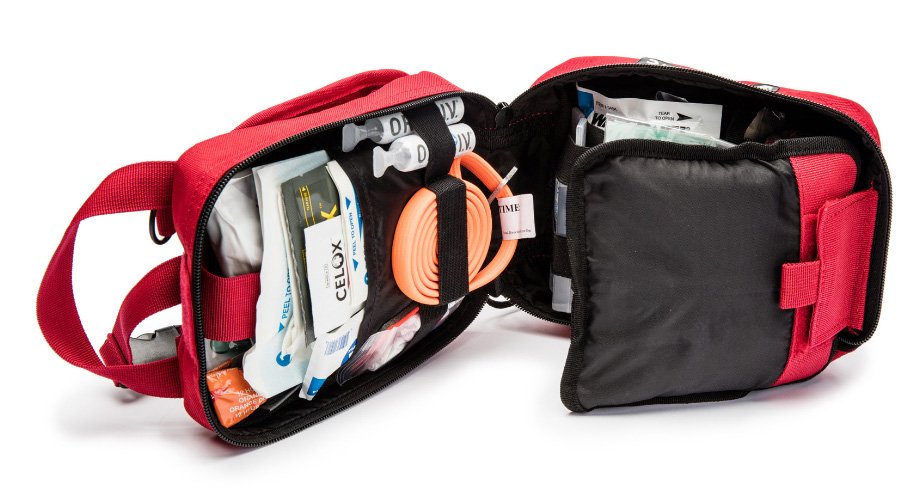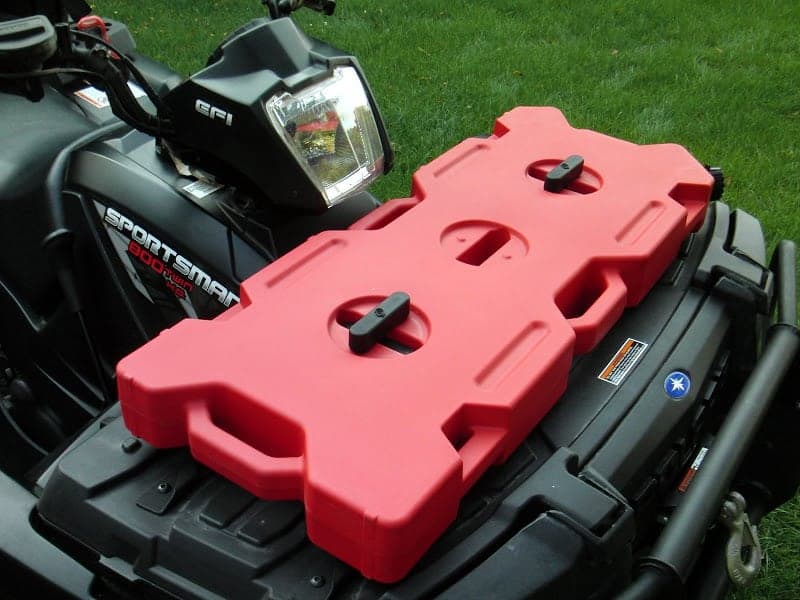
Riding an ATV is fun — especially if you know how to properly prepare for a trip. In this article, you’ll find a comprehensive list of things to pack and check before pushing the gas pedal. For maximum safety, try to always travel in groups of two or more vehicles. If you follow the recommendations from this text, each of your ATV trips should be highly enjoyable.
Things to Pack
Food and Water
This might seem like obvious advice — but dehydration is one of the primary hazards that you might face if you accidentally take a wrong turn. A pro tip: bring food for twice the amount of time you are planning on being gone. If you need to spend a night away from home or at a hostel, you’ll appreciate an opportunity to have a snack in the morning. Canned meals, beef jerky, and dried fruits are the most popular menu items among experienced ATV riders. Food and water will help you to stay focused and avoid exhaustion.
First Aid Kit
You should take it even if the weather is excellent and you know the road very well. You might either assemble a first aid kit on your own or buy a pre-assembled one. This is the required minimum for kits that are packed specifically for off-road use.
- Alcohol wipes
- Bandage roll and a variety of large bandages
- Gauze pads
- Infection ointment
- Latex gloves and a mask
- Medical tape

Larger kits might also include the following items:
- Burnaid gel
- Disposable emergency blanket
- Instant cold pack and hot pack
- Plastic bags
- Scissors and tweezers
- Snakebite kit
These are the medications that you should always have in your ATV storage box:
- Activated charcoal and syrup of Ipecac against poisoning
- Benadryl for mild allergic reactions
- Epinephrine in the form of an Epi-Pen for more serious allergic reactions
- Ibuprofen (Nuprin, Motrin, Advil) to reduce inflammation
- Some anti-diarrhea medication
- Tylenol to reduce fever
Make sure you know how to use each of these items and drugs before you set out on a trip. Check your kit regularly and replenish your stock when it starts to run low.
GPS and Maps
Even though you might be used to an electronic GPS, it’s vital to have oldschool paper maps with you. When riding an ATV, you might easily find yourself in an area with poor Internet coverage. You might be surprised how large and numerous such areas are. With maps and GPS, you can happily explore new territories.
Flashlight
An ideal flashlight is durable and has strong brightness levels. It should accurately show the level of its battery charge. With its help, you’ll feel comfortable in environments with poor lighting. If an emergency happens, a flashlight will be indispensable. Also, you might want to attach a light bar or another lighting fixture to your ATV.
Extra Gas

You might need extra fuel because the road that you were planning to use turned out to be unavailable. Or your fellow driver might get into an accident and needs to borrow your gas. Cases, where an extra ATV gas can might come in handy, are various and unpredictable.
Toolkit
These are a few examples of tools that you might need during a ride:
- Utility knife or razor blades
- Magnet
- Complete socket set
- Torx sockets
- Crescent, open end combination box wrenches
- Allen wrenches
- Standard and Phillips screwdrivers of various sizes
- A large hammer
- Pliers of various sizes
- Needle nose pliers
- Large channel-lock pliers
- Snap ring pliers
- Vice grips of various sizes
- Pipe wrenches
- Crescent wrenches of various sizes
- A big pry bar
- Air pressure gauge
- Jumper cables
Ideally, you should learn how to repair your ATV’s components on the go yourself. But if you lack skills, you can always ask for help — and it would be great if you have all the necessary tools with you.
Tire Pump
For highway driving, your quad’s wheels should be full of air. But when you turn offroad, you might want to reduce the pressure in your tires. Thanks to a portable tire pump, your ride will always be smooth and swift.
Tire Patch Kit
Spare tires might take too much space, so it might be easier to carry a kit that will help you to repair a flat tire. Typically, such kits contain inflation canisters, plugs, and other small tools.
Portable Jump Box
A portable jump-starter will save your day if your ATV’s battery dies. The most important thing is to charge the jump box before each trip.
Winch and Tow Straps
A winch consists of a crank and a spool. This mechanical component can be attached to your vehicle for added support in inconvenient situations. Tow straps are made from non-stretch materials. You attach them to the hook and then wrap it around the winch to tow the vehicle with a swift tug. To ensure proper operation, you should systematically check your winch cable for kinks, frays, or damage and straighten it, if necessary.

Tow straps are optimal for cases where your vehicle gets damaged and you need to move it off a trail. But if you need to save your four-wheeler from an environmental hazard, you should opt for recovery straps because they are much stronger.
Clothes and Accessories
In summer, you might want to take sunblock, sunglasses, and insect repellent with you. In colder months, it might be reasonable to pack some extra clothing in addition to what you wear. A jacket and windbreaker will keep your body warm, while a warm hat or hooded jacket will protect your head from wind and low temperatures.
Final Thoughts
Hopefully, this article came in handy, and now you better understand how to prepare for an ATV ride. If certain components that you’re planning to take on a trip have a battery, you should fully charge it. Prepare for the weather and climate conditions that you’re anticipating and put on protective clothing. Have a good rest the night before, eat well before you hit the road, and enjoy your ride! We hope our article was useful for you!

